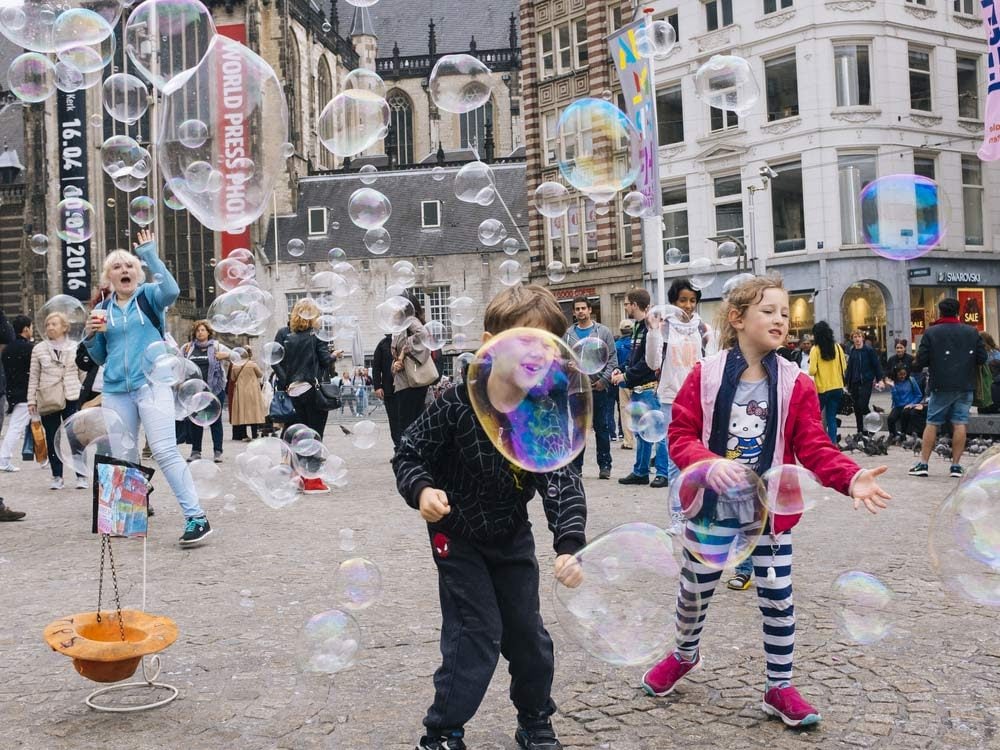
1. Choose Your Subject
“A good photographer can take a good image with any camera,” says travel photographer Richard I’Anson, author of Lonely Planet Travel Photography: A Guide to Taking Better Pictures. One of the biggest mistakes people make with photos, says I’Anson, is failing to focus their photo on a single subject. “Make sure you know what the photo is of and then try and fill the frame with your subject,” he says. “If you have to explain something about the image, then it’s probably not working.”

2. Avoid the Centre
“One of the biggest traps people fall into is that the focus spot is right in the middle of the frame,” I’Anson says. “People tend to focus on their subject in the middle and take the photo,” meaning every shot has the subject in the middle of the frame. By shifting the subject elsewhere, I’Anson says, you’ll generally create more dynamic images.

3. Play with Orientation
Another thing your fancy camera can’t decide for you? Whether to shoot in portrait or landscape—that is, vertically or horizontally. “A lot of people just hold the camera and take the photo,” I’Anson says – and, he adds, “most people by default take horizontal pictures.” Experiment with both, and even take two orientations of each subject to learn what works best.
Check out five ways to take better black-and-white photography.

4. Move Around
“Don’t assume that the first place you see something of interest from is the best place to take the photo,” says I’Anson. Move around, see how the light hits the subject from multiple angles, and even shoot the same subject from different places to get a variety of shots.
Here are ten landmarks you need to visit at least once in your life.

5. Move Up and Down
“Just going down on your knees or taking a different viewpoint can change things,” says I’Anson. Think about how looking up or down at your subject, rather than straight on, might change the nature of the photo and give the viewer a different perspective.

6. Pay Attention to Light
“There’s no question that light is one of the most powerful tools at the disposal of a photographer,” says I’Anson. “What people should ultimately be doing is trying to understand light and the impact it has on their photographs.” Look at the direction of light, how it’s hitting the subject and what it’s doing to the subject. For instance, he adds, “there will be a certain time of day when the facade of a building is lit up beautifully, and another time of the day when it’s in shade,” and it’s the former that will give you the better photo.

7. Plan Ahead
It’s a truism that the best photos are taken at sunrise or sunset, which is why professional photographers will go out of their way to arrive at certain locations—think the Taj Mahal or Niagara Falls—at the best time of day for good light. When you can, plan your travel schedule so that you’re in the right place at the right time. (Yes, this often means some very early mornings.) Sometimes, I’Anson suggests, it’s as simple as looking at a map to see where the sun rises and sets.

8. Be Flattering
When taking photographs of people, I’Anson says, the most flattering light is bright but overcast, as “if the light’s directly on their face you can get awful shadows.” On a sunny day, move yourself and your subject until the light’s at its best. And for the best shots of people, make sure to focus on the eyes, I’Anson says. “If the eyes are out of focus, the picture’s really failed.”

9. Think Photography First
To really move beyond vacation shots, I’Anson says, you’ve got to start “travelling to take pictures rather than taking pictures while travelling.” Changing your mindset and becoming a photographer while you travel will make all the difference in the photos you take – even if you only do it for part of your vacation. “You’ve got to go out looking to take pictures rather than just happily snapping away when you come across things,” I’Anson says.